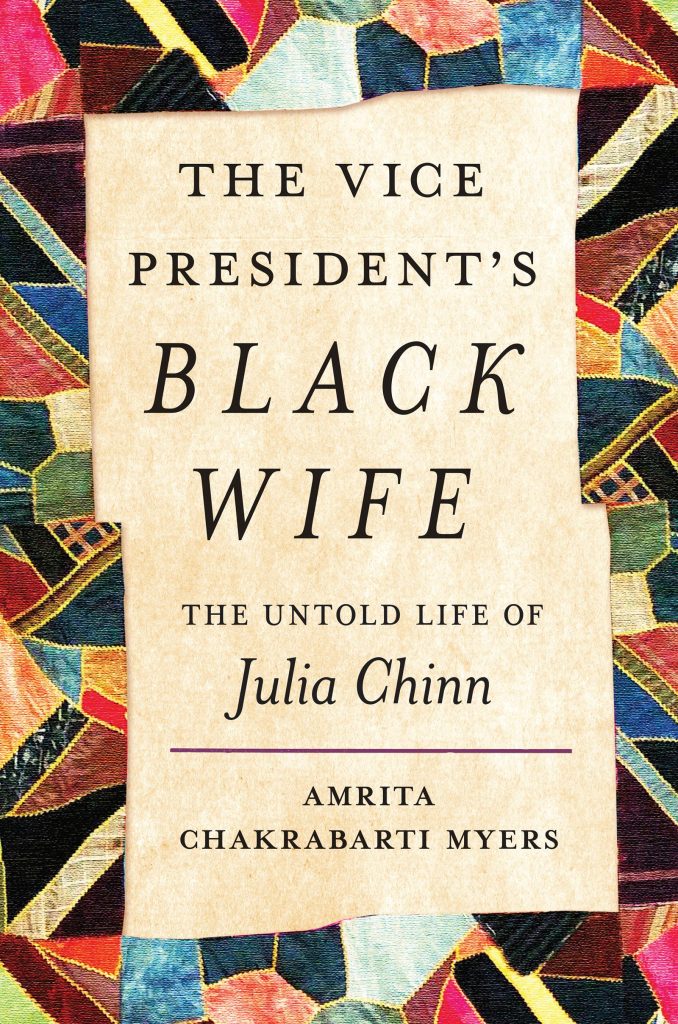By Terri Schlichenmeyer
The deed to the house will be yours, free and clear, very soon.
Once the mortgage is paid off, yep, the house and the land are yours. Follow the paperwork, and there are many things you can outright own: a bike, a truck, a dog or cat, but unlike the story you’ll find in “The Vice President’s Black Wife” by Amrita Chakrabarti Myers, that doesn’t extend to a spouse.
In the late 18th century, when America was merely a teenager, “Kentucky was the frontier,” says Myers, with great stands of trees between “vast swath[s] of rich, fertile land.” Robert Johnson was a surveyor in that area, and he liked what he saw. He and his wife arranged to buy several thousand acres of the best farmland around.
This made Johnson a wealthy man and, by extension, his oldest son would never want for a thing. And so when young Richard, born in 1780, was all grown up but still unmarried, his parents gave him a plantation and a hundred slaves to run it.

Fourteen years old, Julia was pretty, smart, and capable; in fact, Richard’s mother chose her to run his house while he was away in Washington, particularly because of her intelligence and her management abilities.
It didn’t take long for Richard to notice Julia, or for him to bed her, then wed her.
Myers hints that spite made Richard do it, or that he was flaunting social mores. It surely wasn’t illegal to sexually assault one’s female slaves; in Kentucky, it wasn’t illegal to marry someone of another race, either. Was there affection in the marriage or, as Myers suggests, was it a business transaction, with Julia trading her freedom for their daughters’ future?
We may never know. Richard didn’t sell Julia and he never freed her, though his girls received manumission. But after his service as Vice President of the U.S. and his death at a ripe old age, his brothers conspired to erase the family he loved…
Sometimes uneven, sometimes repetitive, but at the same time, so very interesting, “The Vice President’s Black Wife” proves that there are a lot of things about history left to learn.
Starting with Julia’s mother, author Amrita Chakrabarti Myers begins in a commonplace place – the lives of enslaved women and children – but she departs from the norm by telling tales with a large dash of feminism. In many ways, as she shows, women both white and enslaved often had much more power than history books would like us to believe and that, surprisingly, extended to Julia Chinn. It’s truly eye-opening.
Still, this book is chilling in the what-ifs – perhaps even more so because Julia was well aware of them and so are readers. These possibilities will leave you shaken with the twist in the story at the end of the book, which will send you racing back to re-read the preface. Or you might just re-read it all because “The Vice President’s Black Wife” is that kind of book, indeed.




